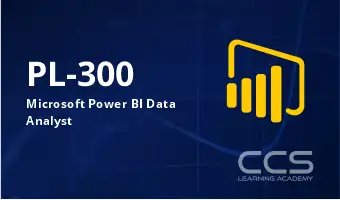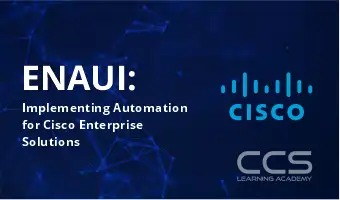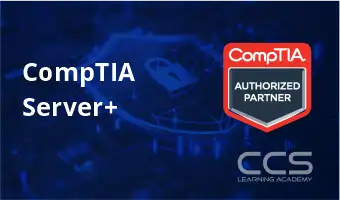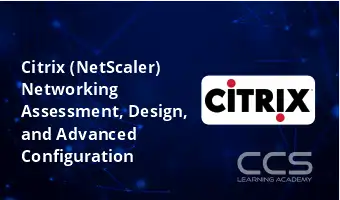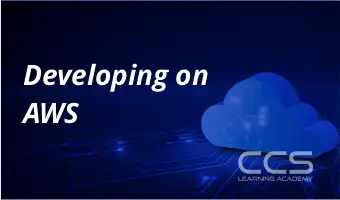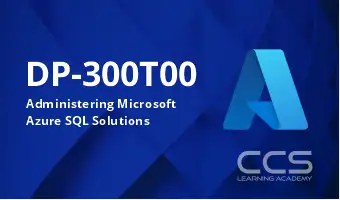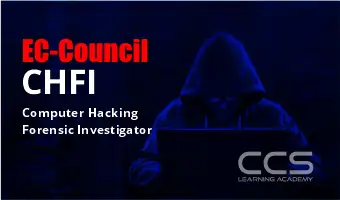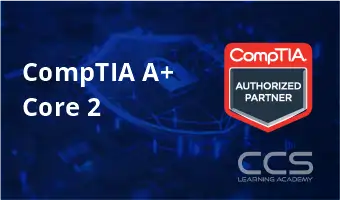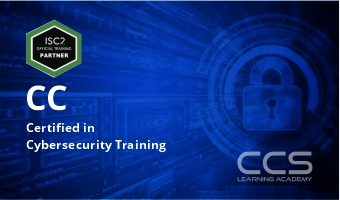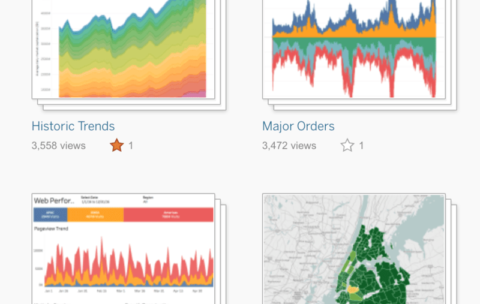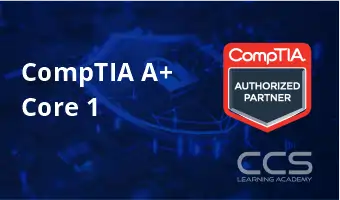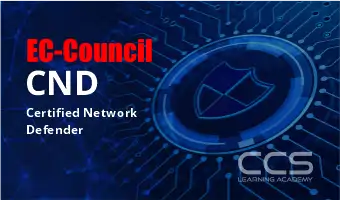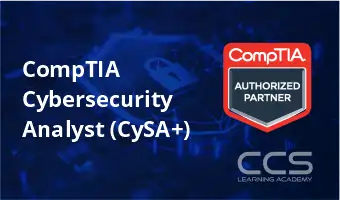Popular Topics
Data Analyst
CompTIA Security+
Risk and Compliance
Certified in Cybersecurity Training
CISSP
Certified in Governance
AWS
Developing Generative AI on AWS
Microsoft Office 365 Online
Microsoft Azure
CISSP Exam Preparation Course
Cloud Computing
Administering A SQL Database
CompTIA Cybersecurity Analyst
ITIL 4 Certification
Certified Cloud Security Professional
Azure AI Fundamentals
CompTIA Linux
PECB ISO 31000 Certification
Generative AI Applications on AWS
Penetration Testing Professional
Security Engineering on AWS
Developing AWS Services and Tools
ISO 22301 Certification
Chief Information Security Officer
ITIL 4 Foundation Certification Training
Penetration Testing Certification
Network Defender
AWS Cloud Essentials
SQL Data Models
SQL Server Integration
ISO / IEC 42001 Lead Auditor
Citrix
SQL Data Warehouse
ISO/IEC 42001 Lead Implementer
Microsoft PoerShell
Security on AWS
Cloud Operations on AWS
ISO 22301 Lead Auditor
SharePoint End User
Microsoft Azure Data Fundamentals
Certified Secure Software Lifecycle Professional
CompTIA
Cybersecurity Analyst
Microsoft Azure Certification
SQL Server Performance Tuning
ISO 31000 Certification
Advanced Developing on AWS
SQL Server Performance Optimization
ISO 31000 Risk Manager
Cybersecurity Certification
SQL Database Infrastructure
CompTIA A+ Core 1
CMMC Foundations
Azure Infrastructure Solutions
CompTIA Server
ISO / IEC 42001 Certification
Citrix Endpoint Management
CMMC Certification
Azure AI Solution
CompTIA PenTest
Microsoft Power BI Data Analyst
CMMC Certified Professional
Citrix Cloud with Amazon Web Services
CompTIA Data+
CompTIA Cloud Essentials+
Azure SQL Solutions
Lead Cloud Security Manager
Microsoft Azure for SAP Workloads
Microsoft Azure Administrator
PL-600 Power Platform Solution Architect
CompTIA Project
CompTIA A+ Core 2
Cloud Security Manager
CompTIA Network
Cloud Security Certification
ISO 22301 Lead Implementer
Lead Pen Test Professional
Microsoft Azure Fundamentals Training Certification
ISO 31000 Lead Risk Manager
Microsoft Project 2016 Level 1
CompTIA IT Fundamentals
Cybersecurity Foundation
Microsoft Project 2016: Level 2
CompTIA Cloud
All `Live Courses by Vendor Courses
Filter by Topic
Filter by Vendor
VMware Horizon 8: Deploy and Manage
Course Description: VMware Horizon 8: Deploy and Manage is a …
What you'll learn
Recognize the features and benefits of VMware Horizon
Define a use case for your virtual desktop and application infrastructure
Use vSphere to create VMs to be used as desktops for VMware Horizon
Create and optimize Windows VMs to create VMware Horizon desktops
Install and Configure Horizon Agent on a VMware Horizon desktop
Configure, manage, and entitle desktop pools of full VMs
Configure and manage the VMware Horizon Client systems and connect the client to a VMware Horizon desktop
Configure, manage, and entitle pools of instant-clone desktops
Create and use Remote Desktop Services (RDS) desktops and application pools
Monitor the VMware Horizon environment using the VMware Horizon console Dashboard and Horizon Help Desk Tool
Identify VMware Horizon Connection Server installation, architecture, and requirements
Describe the authentication and certificate options for a Horizon environment
Recognize the integration process and benefits of Workspace ONE Access and Horizon 8
Compare the remote display protocols that are available in VMware Horizon
Describe the 3D rendering options available in Horizon 8
Discuss scalability options available in Horizon 8
Describe different security options for Horizon environment
VMware vSphere: What’s New 6.7 to 7.0
Course Description In this three-day, hands-on training course, you explore …
What you'll learn
Describe the software-defined data center (SDDC)
Explain the vSphere components and their function in the infrastructure
Install and configure ESXi hosts
Deploy and configure VMware vCenter® Server Appliance™
Use VMware vSphere® Client™ to manage the vCenter Server inventory and the vCenter Server configuration
Manage, monitor, back up, and protect vCenter Server Appliance
Create virtual networks with vSphere standard switches
Describe the storage technologies supported by vSphere
Configure virtual storage using iSCSI and NFS storage
Create and manage VMware vSphere® VMFS datastores
Use the vSphere Client to create virtual machines, templates, clones, and snapshots
Create a content library and deploy virtual machines from templates in the library
Manage virtual machine resource use
Migrate virtual machines with VMware vSphere® vMotion® and VMware vSphere® Storage vMotion®
Create and manage a vSphere cluster that is enabled with VMware vSphere® High Availability and VMware vSphere®
Distributed Resource Scheduler™
Discuss solutions for managing the vSphere life cycle
Use VMware vSphere® Lifecycle Manager™ to perform upgrades to ESXi hosts and virtual machines
VMware vSphere: Install, Configure, Manage 7.0
Course Description This course features intensive hands-on training that focuses …
What you'll learn
Describe the software-defined data center (SDDC)
Explain the vSphere components and their function in the infrastructure
Install and configure ESXi hosts
Deploy and configure VMware vCenter® Server Appliance™
Use VMware vSphere® Client™ to manage the vCenter Server inventory and the vCenter Server configuration
Manage, monitor, back up, and protect vCenter Server Appliance
Create virtual networks with vSphere standard switches
Describe the storage technologies supported by vSphere
Configure virtual storage using iSCSI and NFS storage
Create and manage VMware vSphere® VMFS datastores
Use the vSphere Client to create virtual machines, templates, clones, and snapshots
Create a content library and deploy virtual machines from templates in the library
Manage virtual machine resource use
Migrate virtual machines with VMware vSphere® vMotion® and VMware vSphere® Storage vMotion®
Create and manage a vSphere cluster that is enabled with VMware vSphere® High Availability and VMware vSphere® Distributed Resource Scheduler™
Discuss solutions for managing the vSphere life cycle
Use VMware vSphere® Lifecycle Manager™ to perform upgrades to ESXi hosts and virtual machines
VMware vSphere: Fast Track 7.0
Course Description This five-day, intensive course takes you from introductory …
What you'll learn
• Describe the software-defined data center (SDDC)
• Explain the vSphere components and their function in the infrastructure
• Install and configure VMware ESXi™ hosts
• Deploy and configure VMware vCenter® Server Appliance™
• Use VMware vSphere® Client™ to manage the vCenter Server inventory and the vCenter Server configuration
• Manage, monitor, back up, and protect vCenter Server Appliance
• Create virtual networks with vSphere standard switches
• Describe the storage technologies supported by vSphere
• Configure virtual storage using iSCSI and NFS storage
• Create and manage VMware vSphere® VMFS datastores
• Use the vSphere Client to create virtual machines, templates, clones, and snapshots
• Create a content library and deploy virtual machines from templates in the library
• Manage virtual machine resource use and manage resource pools
• Migrate virtual machines with VMware vSphere® vMotion® and VMware vSphere® Storage vMotion®
• Create and manage a vSphere cluster that is enabled with VMware vSphere® High Availability and VMware vSphere®
Distributed Resource Scheduler™
• Create virtual networks with VMware vSphere® Distributed Switch™ and enable distributed switch features
• Discuss solutions for managing the vSphere life cycle
• Use VMware vSphere® Lifecycle Manager™ to perform upgrades to ESXi hosts and virtual machines
• Use host profiles to manage ESXi configuration compliance
• Describe how vSphere storage APIs help storage systems integrate with vSphere
• Configure and use virtual machine storage policies
Tableau Desktop Level 2: Beyond the Basics
Course Description Tableau has emerged as one of the most …
CompTIA A+ Core 1
CompTIA’s A+ certification is the industry standard for validating the …
What you'll learn
Install and configure PC system unit components and peripheral devices.
Install, configure, and troubleshoot display, multimedia devices, storage devices, and internal system components.
Explain network infrastructure concepts.
Configure and troubleshoot network connections.
Implement client virtualization.
Support and troubleshoot laptops, mobile devices and print devices.
Certified Network Defender | CND
Course Description Certified Network Defender (CND) is a vendor-neutral, hands-on, …
CompTIA Cybersecurity Analyst (CySA+)
Participate in The High-Stake Cyber-Security Analyst Certification Course By participating …
What you'll learn
Assess information security risk in computing and network environments.
Analyze reconnaissance threats to computing and network environments.
Analyze attacks on computing and network environments.
Analyze post-attack techniques on computing and network environments.
Implement a vulnerability management program.
Collect cybersecurity intelligence.
Analyze data collected from security and event logs.
Perform active analysis on assets and networks.
Respond to cybersecurity incidents.
Investigate cybersecurity incidents.
Address security issues with the organization’s technology architecture.

